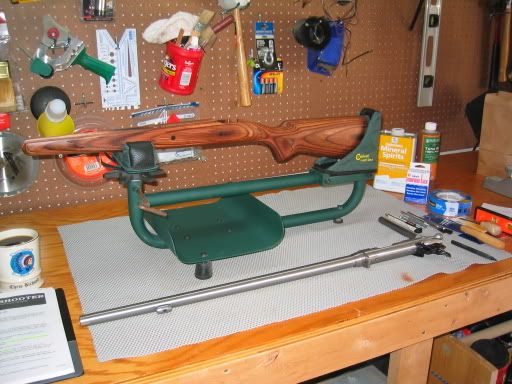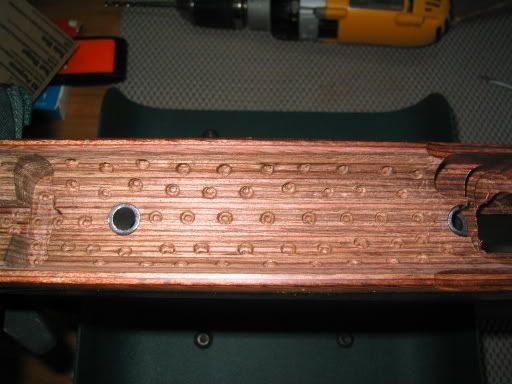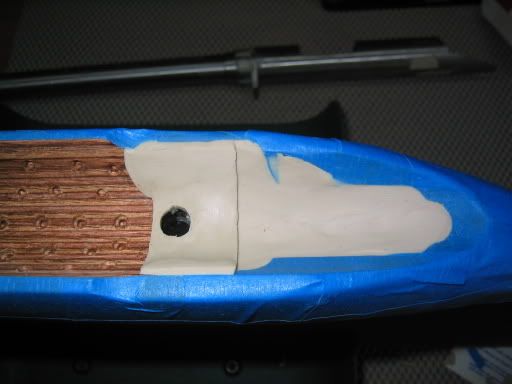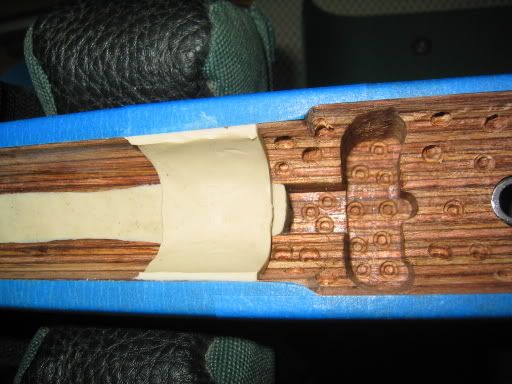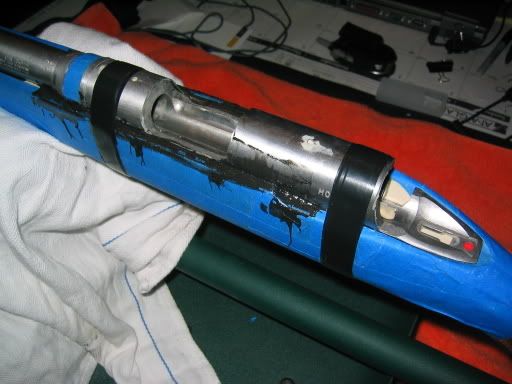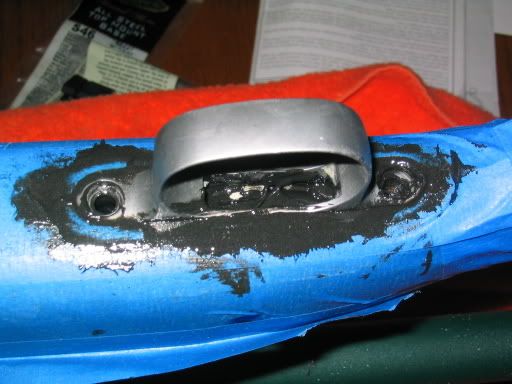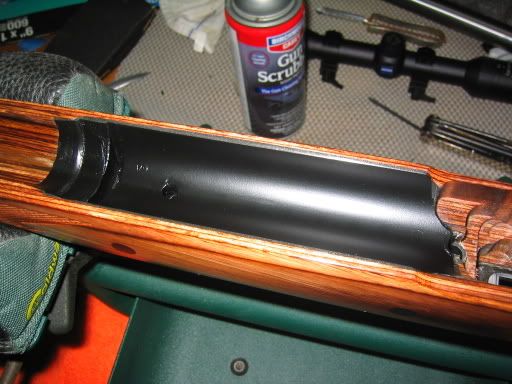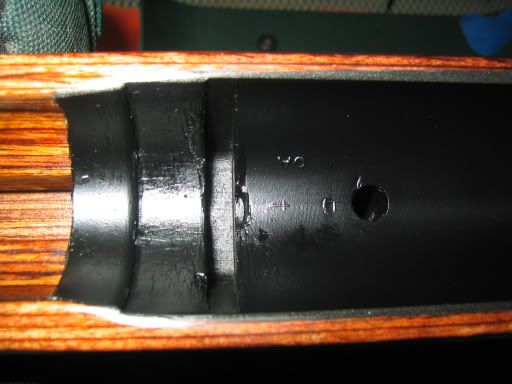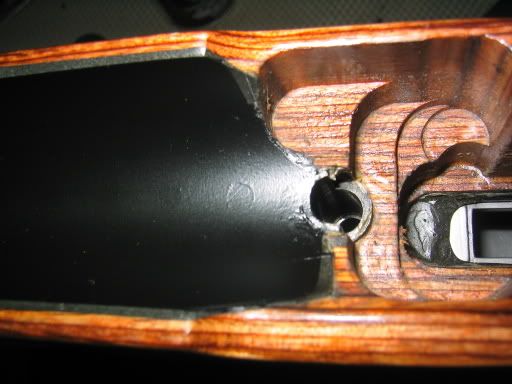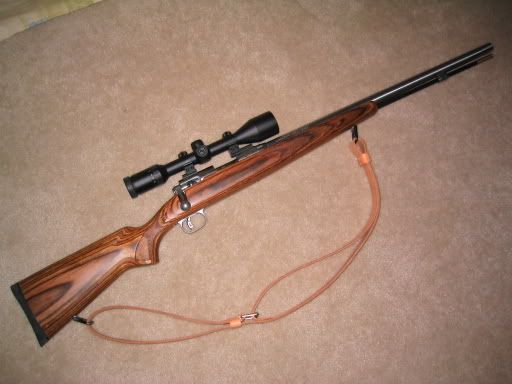Step #4
I didn't get a picture of me adding the epoxy, as it was a freaking mess, and I didn't want to touch my digital camera. Everything was taped carefully with blue 3M painters tape (low adhesive...won't harm stock finish) and trimmed with an exacto knife. This is so critical, as you want the edges of the bedding job to be neat and crisp. After taping, I applied release agent to the tape and, of course, every square millimeter of the receiver. I removed the trigger group altogether, and I'd recommend you do the same!
I started with 3" x 1/4" x 28 bolts with the heads cut off as guides to sink the receiver and barrel back into the epoxy. These settled into the pillars nicely without pushing much epoxy into the pillar holes. This is one nice thing about Marine-Tex Grey; it's so thick, that it's like working with paste, and you can keep it away from the pillar holes until you sink the receiver. Once it was down into the stock, I switched to the original receiver bolts (covered liberally with release agent) to snug the receiver down. I used less than full torque to snug it down (maybe 60%). I don't have a torque wrench, so I just guessed. The tighter you crank it down, the more bedding compound will seep out and the thinner the final bed. I'm happy with how this approach worked out.
The black electrical tape was applied prior to snugging down the bolts and, in retrospect, was completely unnecessary. Make sure you jam modeling clay into every hole that exists, or you're bound to have some epoxy make it's way in.
For release agent, I used paste furniture wax. Some use Pam spray. Johnson's furniture wax is popular. I swear you could use anything greasy...Crisco would probably work, but I'd recommend sticking to something that has been tried and true. I used a small acid brush to get the wax into all of the little crevices in which I didn't want epoxy setting up.
I let it sit 24 hours before removing the barrel, and it was no problem to get it out. I'd wait another 2-3 days before even attempting to shoot it. Don't sand too soon, as epoxy that is only partially set up will flake off in chunks rather than coming off smoothly with sandpaper. I'd wait at least 48 hours prior to sanding.





